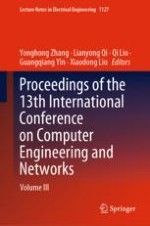2024 | Buch
Proceedings of the 13th International Conference on Computer Engineering and Networks
Volume III
herausgegeben von: Yonghong Zhang, Lianyong Qi, Qi Liu, Guangqiang Yin, Xiaodong Liu
Verlag: Springer Nature Singapore
Buchreihe : Lecture Notes in Electrical Engineering
